
views
Making a Simple Wire Ring
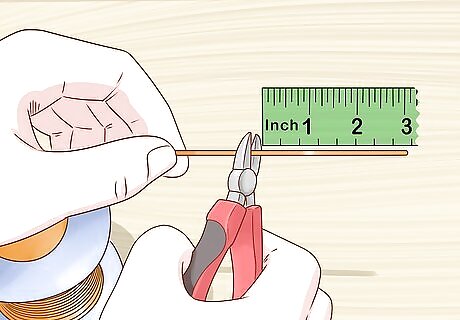
Use pliers to cut 3 inches (7.6 cm) of wire from the spool. This can be gold, copper, or silver wire. Measure the wire using a ruler, or do a rough estimate and cut roughly 3 inches (7.6 cm) without measuring. If in doubt, make the piece of wire longer as opposed to shorter—you can always trim off the ends if necessary. The thickness and exact color of the wire is entirely up to you, but thinner wire is best as it allows you to easily manipulate it. Look for artistic wire at a craft or hardware store that comes in a small spool, as these are most often used for making jewelry. Flatten out the wire after it’s cut. Straightening it out will make the wire easier to work with.
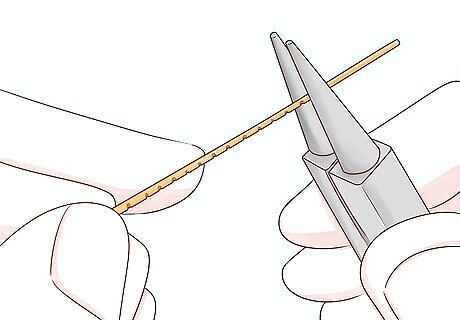
Use pliers to create indentations in the wire if you want a textured ring. How many dents you create is up to you—space them out evenly or make the dents super close together so the ring appears to have stripes, if desired. Hold the wire steady in one hand and use your dominant hand to create small dents with round nose pliers. This is a great way to add style and a unique quality to your ring.

Bend the wire to create a wavy pattern for an artsy ring. Instead of using the pliers to make indentations in the wire, use them to bend the wire in different directions. As you hold the wire firmly in one hand, use the pliers to bend down on the wire. Continue by then bending the next section of wire upwards, switching back and forth between downwards and upwards motions to create a wave along the wire. If desired, you can make small indentations along the wire before creating a ripple effect as well.
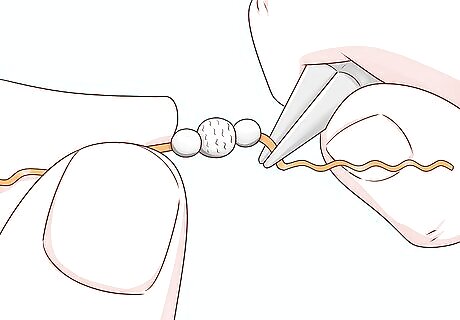
Add beads to the ring to add color or sparkle. Pick out a few beads that you’d like to use on your ring, making sure they have a hole in them so they can slide down the wire. Once you’ve added the beads to the wire, create bends in the wire on both sides of the beads so that the beads stay in place. For example, you might pick out one larger bead to be set in the middle of two smaller, identical beads. Pick out super tiny beads that can be strung along the entire wire if you want your ring to be completely beaded.

Wrap the wire around the top of a nail polish bottle once the design is finished. After you’ve made your dents or ripples and added any beads, position the wire around a nail polish bottle handle. This will resemble your finger, letting you bend the ring into shape. If you don’t have a nail polish bottle to use, look for a different perfectly round, ring-sized object to wrap the wire around. Using hard objects, as opposed to just your finger, is better for creating the ring shape as it ensures your ring is perfectly round.
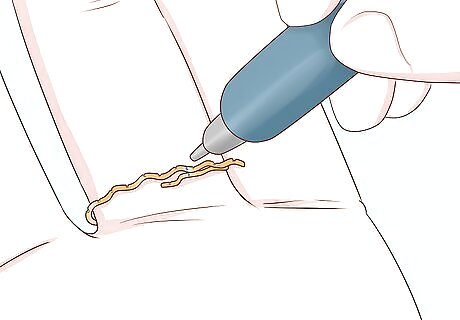
Mark where you need to cut off the ends of the ring. Place the wire around your finger once it’s rounded, checking to see where it needs to be cut so that it fits your finger perfectly. Mark where the wire ends should be cut using a marker.
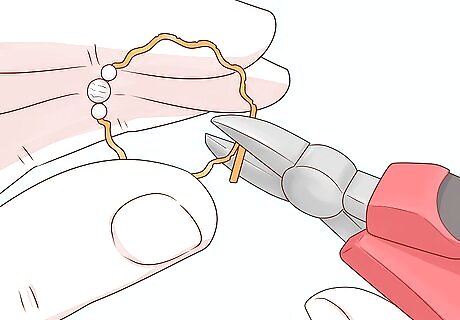
Use pliers to cut the ring so it's the right size. Trim the wire right where you made your markings. If desired, wash the marker off of the wire using soap and water, or use acetone if you used a permanent marker.
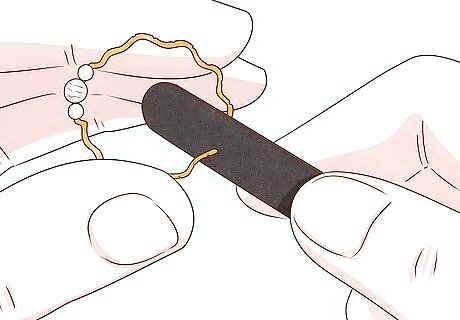
Sand the edges of the wire so they're smooth. Use a nail file to sand the edges of the wire so that they aren’t sharp anymore, making your ring more comfortable and safe. Once the sharp edges of your ring have been filed down, the ring is ready to wear! You can also bend the very tips of the wire backwards using pliers so that they’re not poking your finger, if desired. Anastasia Young Anastasia Young, Jewelry Making Expert Crafting a ring by hand is a meaningful, fulfilling experience. Shaping metal, wire, or even paper into jewelry is an act of self-expression. A handmade ring's beauty comes not just from its look, but the care and creativity poured into making it. The process of turning raw materials into a personal accessory is deeply personal and satisfying.
Forming a Ring out of a Coin

Find a coin you’re willing to make into a ring. While you can use any sort of coin, it’s best to start with larger ones, such as a quarter, unless you’re making a ring for smaller fingers. The coin doesn’t need to be new—it can be spare change you already have around the house. Make sure the coin isn't valuable before deciding to turn it into a ring.
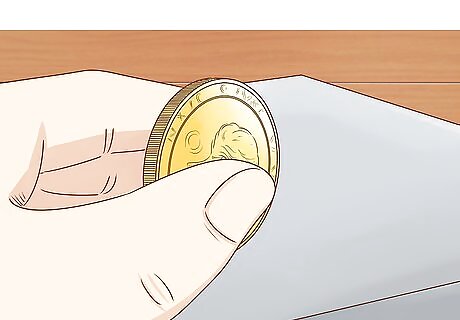
Hold your coin on a flat, hard surface. Look for a flat piece of heavy metal, a concrete floor, or any other solid, hard surface. This will be your base for hammering, and you’ll hold the coin on top of the hard surface. Choose a surface that won’t be damaged by a hammer. A bench vise is another option for a flat, hard surface.
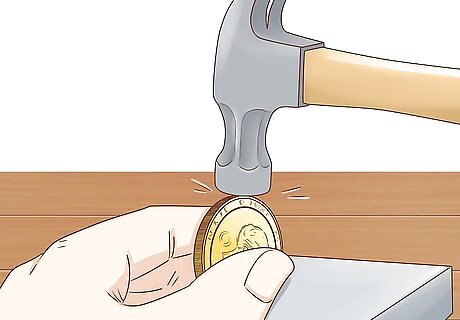
Hammer the edges of the coin while rotating it slowly. Hold the coin using one hand so that it’s sitting up straight with a sliver of an edge touching the hard surface. Use a hammer to gently hit the edges of the coin, rotating the coin slowly as you hammer so that all of the sides are hit evenly. Continue hammering until the coin reaches the thickness of a ring. Make sure your fingers aren’t in the way of the hammer as it’s hitting the top of the coin’s edges. How thick you want your ring to be is entirely up to you—roughly 0.5 cm (0.20 in) wide is good. Thicker rings will take longer to hammer, so be patient during this step. Avoid hitting the coin with a lot of force, as this could turn it into an oval or damage the overall form.

Place the coin flat on a piece of wood. Make sure the piece of wood is thick enough that the drill can go down into the wood without messing up the surface underneath. Place the coin in the center of the piece of wood, and either hold the coin with your fingers or use an adjustable wrench to keep the coin steady. If you’re holding the coin, hold the very edges so that your fingers won’t be in the way of the drill.

Drill a large hole in the center of the coin. Hold the coin steady as you drill the hole. Start with a smaller gauge and drill all the way through the coin. Switch the drill bit to a larger size, then drill through the metal again. Once you’ve drilled the hole, the coin should be left with roughly 0.5 cm (0.20 in) of coin thickness around the entire edge.
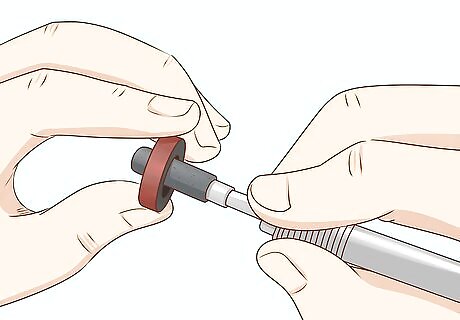
Grind out the middle of the coin using a sanding wheel. If you have a sanding wheel that attaches to your drill, this is great for sanding out the rest of the coin to create a smooth ring. Hold the coin steady using your fingers or some other sort of clamp as you sand the inside of the ring until it thins out. A dremel tool with an attachable sanding wheel is also a good option. Continue sanding until the coin is the thickness you want your ring to be.
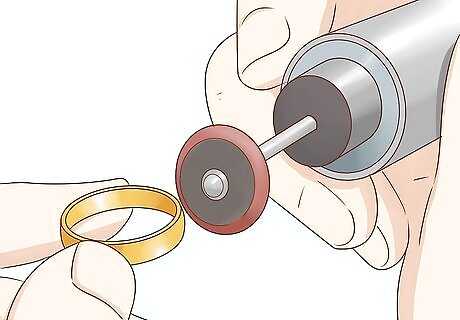
Polish the ring using a polishing wheel or cloth. Attach a polishing wheel to your drill or dremel, using a small amount of polishing compound to get the best shine. Run the polishing wheel along the inside and outside of the ring, smoothing out all of the edges so the ring is shiny and completed. To use polishing compound, dip a rag or polishing wheel into the container of polish, using a small amount to rub over the ring's surface.
Creating a Ring from Paper
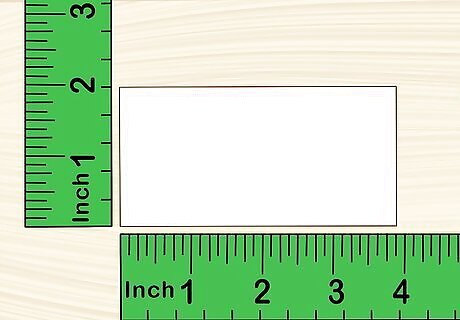
Cut a piece of paper to be 5 by 10 centimetres (2.0 by 3.9 in). This is a great ring size to work with, though the paper can be bigger if desired. Make sure the proportions stay the same—the paper should be twice as long as it is wide. Use a thick, colorful piece of paper for a sturdy, bright ring.
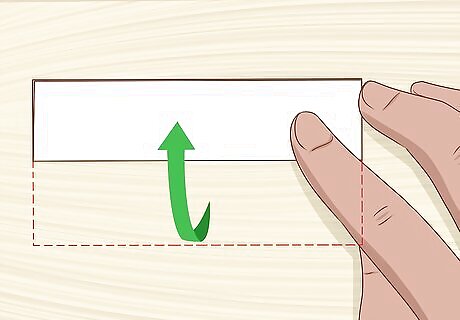
Fold the piece of paper in half horizontally. Lay the piece of paper on a flat surface with the longest sides positioned horizontally. Bring the top of the piece of paper down to form a crease in the middle. Unfold the piece of paper once this is done. You're creating a hot-dog style fold in the piece of paper.
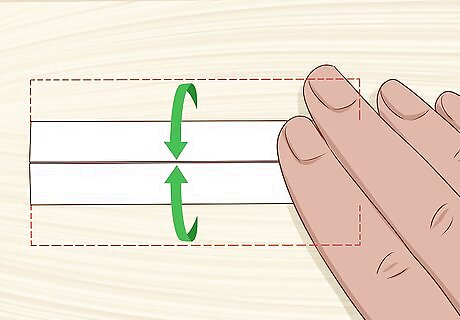
Bring each long edge to the center fold, forming creases. With the paper unfolded and positioned horizontally again, bring the bottom long edge up to the middle fold. Flatten this section to form a crease, and then pull down the top long edge to the middle fold and form a crease here. All of the folds made so far should be parallel to one another.
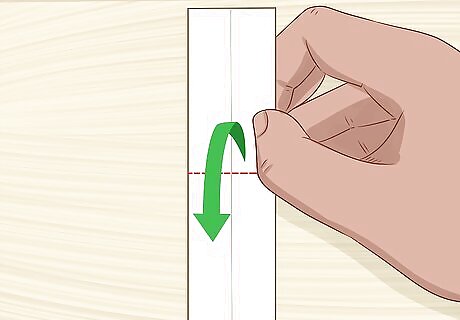
Pick up the paper and turn it over before folding it in half. Without unfolding any creases, pick up the paper and turn it over so that the side facing you is smooth. Position the paper vertically and pull down the top of the paper until it reaches the bottom of the paper, forming a middle fold. Press down firmly on all of your creases.

Fold down the corners of the new folded edge. Bring each corner to the middle, creating two folded triangles that touch each other. Press down on the creases so that they're nice and flat. Only do this to the folded edge, not the opposite end where there isn't a fold.
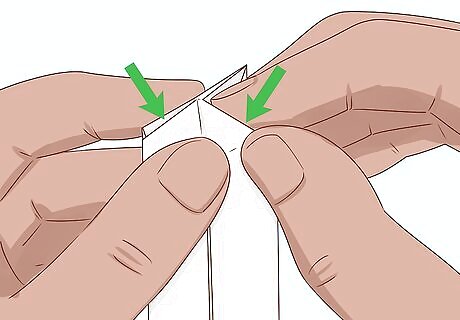
Open the folded triangles and tuck them inside the paper. After you've formed good creases, unfold the two small triangles. Unfold the vertical fold so that the piece of paper is long and skinny, and fold in both triangles that have creases in the middle of the paper so that they disappear. After this step is done, your piece of paper will be folded in half vertically again, resembling a short pencil with a pointed tip and a flat bottom edge.
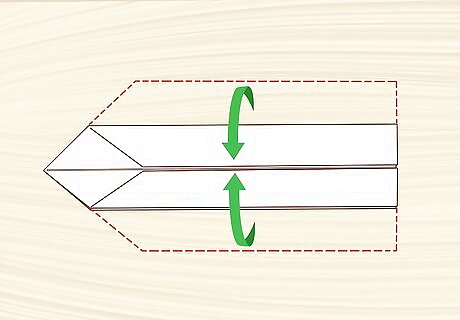
Lay the pencil-shaped paper horizontally on a flat surface. The tip of the 'pencil' should be pointing left. Pull up the bottom long edge of the paper to the center, forming a crease. Do the same thing with the top long edge, folding it over so it's touching the middle. Only fold the top layer of paper, not the bottom layer at this point.

Flip the piece of paper over and fold in the other two long edges. Turn the paper over with the point still facing the left. Pull up the bottom long edge of the paper to the middle, creating a strong crease. Pull down the top long edge to the middle of the paper as well.
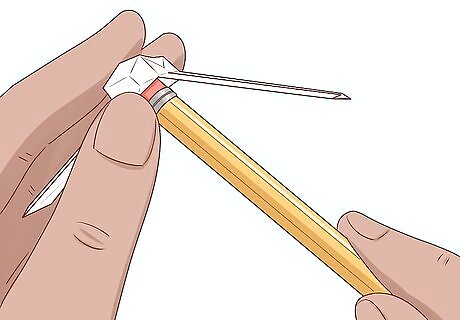
Open the paper gently so the paper diamond is in the center. Only unfold the long vertical fold so that your paper 'diamond' is in the middle of a long, skinny paper band. To make your diamond look more square, stick the flat end of a pencil inside the diamond to flatten out its top.

Fit the ring to your finger by connecting both ends. Position the ring on your finger with the diamond facing upwards. To ensure it fits well, slide the edge of one end of the paper into the other end of the paper, tightening it as necessary. Curling the ends of the paper around a pencil can help maintain its ring shape.


















Comments
0 comment